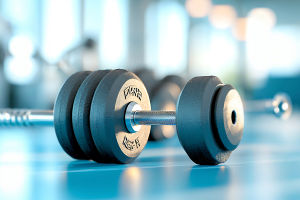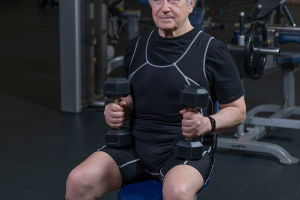Once considered a short-lived trend, ankle weights are making a strong comeback in many fitness routines. Lightweight and easy to use, they can enhance a wide range of exercises, especially in activities like pilates and home workouts.
These wearable weights help increase resistance during movement, making workouts more effective with fewer repetitions.
More challenge with less strain
Adding a bit of weight during exercise makes the body work harder, even during gentle routines. This approach suits those who prefer low-impact training or are just starting out. Lightweight ankle weights can add intensity without the need for advanced strength training techniques or equipment.
Choosing the Right Ankle Weights
Weight and adjustability
For beginners, a weight of around 0.9 to 1 kg is a good starting point. These weights are enough to create noticeable resistance without interfering with movement or form. As strength increases, the load can be adjusted to maintain progress. This method, known as progressive overload, gradually builds muscle by slowly increasing effort over time.
Comfort and fit
Functionality matters. A well-designed weight should stay in place, not slip or cause discomfort. Soft materials and adjustable straps help keep the weights secure during various movements, making them more practical for daily use.
Easy maintenance
Materials that are easy to clean and resistant to moisture are ideal. This keeps the equipment fresh and suitable for regular training sessions.
How to Use Them Effectively?
Best exercises to try
Ankle weights are most useful during exercises that target the lower body. Movements like leg lifts, glute bridges, and controlled kicks can benefit from added resistance. These exercises help tone and strengthen key muscle groups without placing unnecessary pressure on joints.
Useful for core work
Light ankle weights can also add intensity to abdominal exercises. Movements such as leg raises and core extensions become more challenging, leading to better muscle activation and engagement.
Walking or running with ankle weights
Using ankle weights while walking or jogging can temporarily enhance muscular endurance. However, it’s important to limit duration and frequency, as prolonged use during high-movement activities may place extra stress on certain muscle groups. It’s best to use them for brief sessions and not right before intensive leg training.
Suggested Weight Ranges
Lightweight (0.5 kg)
Perfect for beginners or those focusing on mobility, balance, or core training. These allow for a full range of motion without feeling too heavy.
Mid-range (0.9–1.5 kg)
Ideal for general conditioning and moderate resistance training. This level is great for enhancing pilates, stretching, or barre classes.
Heavier (2 kg and above)
Recommended for more experienced individuals looking to build strength. These weights are better suited for short sets of leg-focused movements rather than long cardio sessions.
Top Features to Look For
Customizable load
Some ankle weights allow for gradual adjustment by adding or removing individual inserts. This flexibility supports long-term progress and helps adapt to changing fitness levels.
Durability and material
Weights with a silicone or smooth coating are easier to clean and more resistant to moisture. Good stitching and strong closures, like hook-and-loop straps, improve safety and comfort.
Fit and versatility
A wide range of circumference options allows for use on both ankles and wrists. Adjustable straps and ergonomic designs ensure the weights stay in place during various movements.
In Summary
Ankle weights are a simple, effective way for Lykkers to upgrade their workouts without needing a gym or complex equipment. They provide a gentle challenge during pilates, walking, or light training sessions, making the body work a little harder with every move.
With the right choice in weight and design, they can be a valuable addition to any fitness routine. Start light, focus on comfort and form, and gradually increase the load for consistent, safe progress.


